
With the development of industrial robots, more and more robots are used in the sheet metal bending industry. Everyone knows that selecting a robot for bending can save labor, but what many people are not aware of is that selecting the robot seventh axis can further save labor and maximize the bending efficiency of the robot.
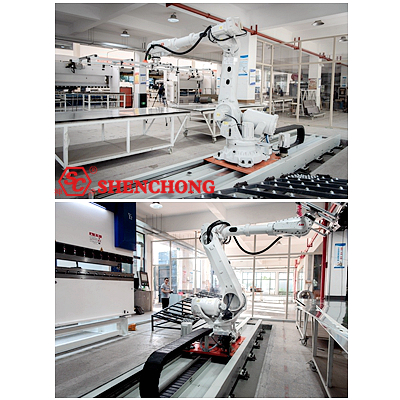
With the progress of technology, robot products are becoming increasingly rich and autonomous performance is continuously improving. The entire robot industry continues to penetrate into the depths of the industry, more and more needs and scenarios will be explored, and new applications and products will continue to emerge.
With the continuous popularization of industrial robot applications, the seventh axis robot has gradually been widely used. The seventh axis is also called the robot walking axis. Due to different installation and working environment requirements, there are also differences in the technical requirements for the seventh shaft.
The walking mechanism that allows a robot to run to another station or multiple stations after completing its work is collectively referred to as the seventh axis of robot walking. The 7th axis of the robot is to install an industrial robot on the walking axis guide rail. It is driven by a motor.
High repetitive positioning accuracy, fast response speed, stable and reliable operation, and can be used in harsh environments.
Customized travel: the seventh axis can be extended according to customer needs.
Flexible installation: the seventh axis of the Shenchong robot is installed on the ground using adjustable anchor bolts. This allows fast installation and ensures accuracy on uneven surfaces and in spaces where other lines and pipes are not conducive to installation.
High safety: the robot seventh axis is equipped with a limit switch. Add mechanical safety limit switches to prevent accidental derailment of the robot. Ensure safe and reliable operation of the robot.
Adopt full servo power system. Achieve fast speed, high accuracy, good dust and dirt resistance. Meet the actual needs of factory automation production lines.
Loading and unloading, welding, assembling, spraying, bending, cutting, transporting, stacking, etc. of various machine tool workpieces.
Logistics transmission, sheet metal flexible production lines, automotive production lines, truss robots, and other industries, suitable for spaces with narrow spaces.
In today's manufacturing industry, the application of multi joint industrial robots has become very common. However, generally speaking, when an industrial robot is installed as a standard product, its single working range is bound to be limited by its own arm span length.
If you want to enable the robot to cover a relatively large work area, such as:
- Operate at multiple stations with large spans
- With a longer working stroke
- Implement continuous and uninterrupted processing operations for various large components (such as welding, painting, inspection, etc.)
Therefore, it is necessary to install the robot on a moving platform and extend its operating range by adding "moving feet". General industrial robots have six axes, so this movable motion track is commonly referred to as the "seventh axis of the robot," or "seventh axis".
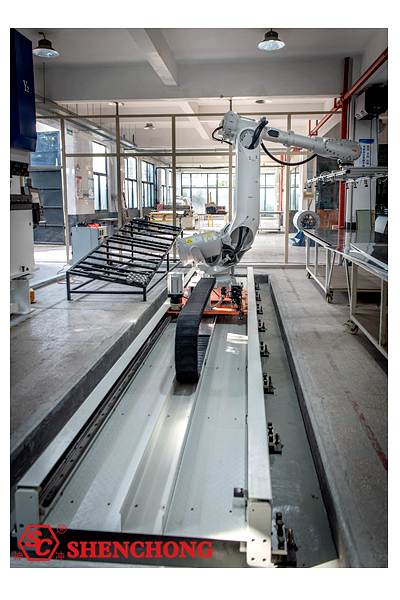
Currently, most of the "seven axes" seen on the market are directly laid on the ground, commonly known as "ground rails". The installation method of "ground rail" is relatively simple, and users only need to use specific bolts to fix it on the foundation that meets the corresponding technical specifications according to the design requirements, and conduct modular assembly.
However, it also has a small disadvantage. It will occupy a relatively large workshop space, which may affect the layout of equipment in the factory. It poses certain restrictions and obstacles to the activities of workers and mobile equipment on the ground, as well as the transmission of production materials.
Therefore, when laying out the production line, everyone must:
- Consider the actual situation of the plant
- Choose a professional automation manufacturer
- Timely communication with the manufacturers
Wuxi Shenchong robot seventh axis uses rectangular guide rails and rigid rollers as motion guides instead of linear guides. The advantage is that it can provide reliable, durable, and low friction linear guides, especially suitable for heavy objects in mobile automation equipment.
The bearing pedestal adopts rollers with sealed, maintenance-free tapered rollers and deep groove ball bearings. The rectangular guide rail is made by integral quenching and precision grinding, combined with gear rack and reducer to provide a powerful and reliable seventh shaft.
This robot seventh axis has a high bearing capacity. Rigid rollers with axial load carrying capacity enable the system to withstand axial and radial impact forces and accidental damage. It is easy to install on any length of the seventh shaft and can provide a higher service life.
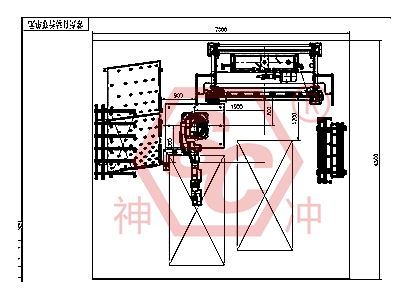
Take the 3000mm×1500mm plate as an example:
If you choose not to use the seventh axis, there are only two stacking stations. If the forming height is 80mm, that stacking station can hold 10 finished workpieces.
Calculated based on the processing time of a single plate of 2 minutes. You need to shut down every 40 minutes to manually pick up the finished workpiece.
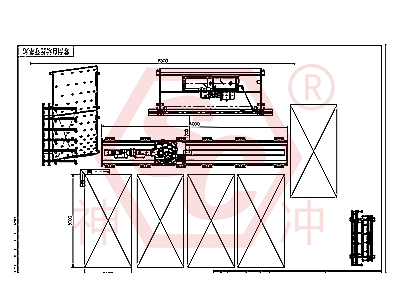
If you choose to use a sixth meter robot seventh axis robotic press brake bending, the number of yards can be increased to five. The time for manually picking up the finished workpiece can be extended to 100 minutes.
This ensures longer continuous processing time, improves the working efficiency of the robot, and reduces the use of labor.
In addition, the use of the seventh axis can also give the robot more space to adjust its posture. Debugging engineers can further optimize the posture of the robot, reduce the bending time of the robot, and further improve efficiency.
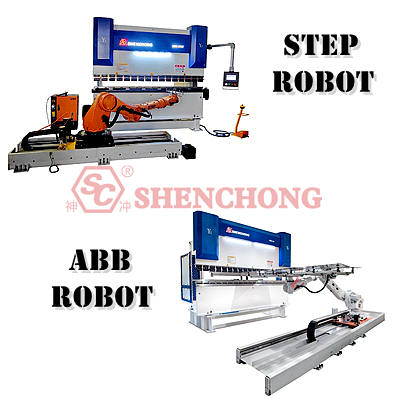
Shenchong robotic process combines the advantages of efficient production, stable operation, and space saving, and is suitable for operations in narrow spaces. The highly rigid arm and advanced servo technology ensure smooth and vibration free movement during high-speed operation. Using vision can achieve rapid workpiece recognition and high-speed retrieval and placement.
- Grab weight 90kg
- Maximum working radius 2281mm
- Repetitive positioning accuracy ± 0.1mm
- Grab weight 200kg
- Maximum working radius 2600mm
- Repetitive positioning accuracy 0.05mm
- Grab weight 80kg
- Maximum working radius 2100mm
- Repetitive positioning accuracy ± 0.06mm
Intelligent Manufacturing Redefine Your Future!
Walking seventh axis robots use automation instead of manual labor. The seventh axis of the robot is a wise choice for you to save labor!